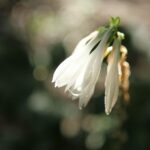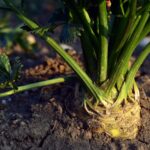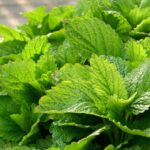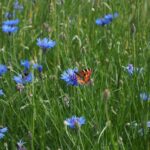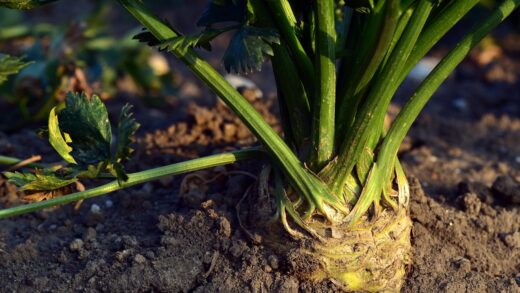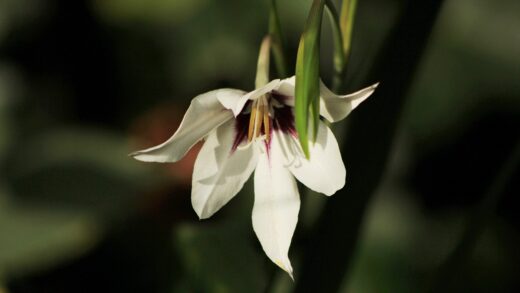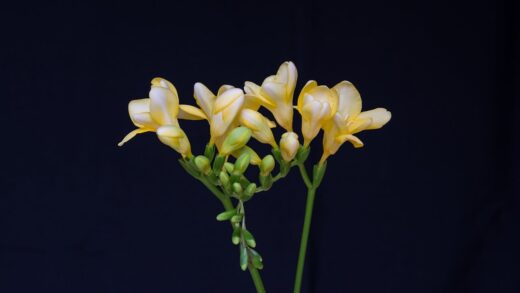The grey-leaved cotoneaster (Cotoneaster glaucophyllus) is a popular ornamental shrub, frequently planted in gardens and public spaces for its dense foliage, attractive red berries, and relative hardiness. Although it is generally considered a resilient plant species, certain diseases and pests can occasionally cause serious problems, diminishing its aesthetic value and overall health. The foundation of successful plant protection lies in prevention, the accurate identification of pathogens and pests, and timely intervention based on an integrated approach. Optimizing environmental factors and regular monitoring are essential for maintaining the plant’s health.
Fungal and bacterial diseases
As a member of the Rosaceae family, the grey-leaved cotoneaster is susceptible to several fungal and bacterial diseases, which pose a particular threat in wet, humid weather conditions. While its dense foliage is aesthetically pleasing, it can slow the drying of leaves, creating a favorable environment for pathogens to establish and multiply. The appearance of diseases often leads to a decline in the plant’s general condition, reducing its ornamental value and, in severe cases, potentially causing its death. Preventive measures, such as proper pruning to improve air circulation, are crucial for minimizing the risk of infection.
One of the most destructive diseases threatening cotoneasters is fire blight, caused by the bacterium Erwinia amylovora. The characteristic symptom of the infection is the sudden wilting and blackening of shoot tips, which bend over like a shepherd’s crook, hence the disease’s name. Flowers and young leaves also die, and a milky bacterial ooze may appear on the infected parts, especially in warm, humid weather. The pathogen enters the plant through blossoms or wounds and spreads extremely rapidly through the plant’s vascular system, potentially killing the entire shrub. The basis of control is the immediate removal of infected branches, including at least 30-40 centimeters of healthy tissue, while continuously disinfecting pruning tools.
Cotoneaster scab, caused by fungal species of the genus Venturia, is also a common problem that primarily attacks the leaves and berries. The infection results in olive-green, later blackening, velvety spots on the leaves. Infected leaves drop prematurely, leading to the defoliation of the shrub and significantly reducing its ornamental value. Small, black, scabby spots form on the berries, which may become deformed and shriveled. The pathogen overwinters on fallen, infected leaves, so the most important preventive step is to collect and destroy the leaf litter in the autumn.
Other fungal diseases, such as powdery mildew and various leaf spot pathogens, can also appear on the foliage of the grey-leaved cotoneaster. The characteristic symptom of powdery mildew is a white, powdery coating on the leaves and young shoots, causing distortion and weakening of the plant parts. Various leaf spots (e.g., Phyllosticta) manifest as small, round or irregular, brown or grey spots, often with a lighter center. Although these diseases rarely cause the plant’s death, a persistent infection weakens the shrub and can open the door for other, more severe pathogens.
Insect and mite pests
The grey-leaved cotoneaster provides an attractive food source and habitat for numerous insect and mite pests, which can cause both direct and indirect damage through their feeding. This damage is not only an aesthetic problem but also leads to the weakening of the plant, making it more susceptible to various diseases. Sooty mold that grows on the honeydew excreted by pests further reduces photosynthetic activity. For effective control, it is important to detect pests early and monitor their populations so that intervention can occur at their most vulnerable developmental stage.
Aphids and scale insects are among the most common sucking pests that can infest the grey-leaved cotoneaster. Aphids typically form dense colonies on young shoot tips and the undersides of leaves; their feeding causes the leaves to become distorted and yellow, and growth slows down. Scale insects, such as the San Jose scale, form small, shield-like coverings on woody parts, branches, and the trunk, and their feeding can cause severe branch dieback and, in heavy infestations, the death of the entire plant. Both pest groups excrete copious amounts of honeydew, on which the aforementioned black sooty mold develops.
Spider mites, especially the two-spotted spider mite, pose a serious threat during hot, dry summer periods. These arachnids live on the undersides of leaves, and their tiny feeding punctures cause a fine, yellowish-white stippling on the upper leaf surface. In severe infestations, the leaves turn a bronze color, dry out, and fall off, and a fine, web-like webbing can be observed on the plant. Because they are extremely small, their presence is often only noticed when the damage becomes apparent, making regular inspection with a magnifying glass essential.
Among the chewing pests, various caterpillars and weevils can cause the most problems. The caterpillars of some moth species cause damage by chewing on the leaves, resulting in perforated, scalloped foliage, and in severe cases, complete defoliation can occur. Weevils, particularly the vine weevil, cause dual damage: the nocturnal adults chew characteristic semi-circular notches on the leaf edges, while their larvae, which develop in the soil, feed on the roots. Root damage is the most dangerous, as it can lead to the plant’s wilting, drooping, and eventual death without the true cause of the problem being visible on the surface.
Prevention strategies and agronomic practices
The fundamental principle of Integrated Pest Management (IPM) is that prevention is always more effective and environmentally friendly than treating an existing problem. The long-term health of the grey-leaved cotoneaster is based on the consistent application of proper agrotechnical methods. The goal of preventive strategies is to create a stable and resilient plant population that is less susceptible to diseases and pest attacks. This all begins with selecting healthy planting material from a reputable source, which in itself lays the foundation for successful horticultural practice.
Careful site selection is the first and most important step in prevention. The grey-leaved cotoneaster prefers well-drained soil that is moderately rich in nutrients and a location in full sun or partial shade. Waterlogged, airless soils can cause root rot, which weakens the plant and opens the way for secondary infections. Improving soil structure by incorporating compost or other organic matter not only aids drainage but also enriches soil life, contributing to the plant’s overall vitality and resilience.
Proper watering and balanced nutrient management are also key elements of prevention. Frequent, light watering that wets the foliage should be avoided, as wet leaves create an ideal environment for fungal diseases. Instead, deep, thorough watering that moistens the root zone is recommended, promoting the development of a deeper root system. Excessive nitrogen fertilization should be avoided as it results in lush, weak shoot growth that attracts aphids and makes the plant more susceptible to fire blight. Using slow-release, balanced fertilizers is most advisable.
Regular pruning and maintaining plant sanitation are essential for protection against diseases and pests. Pruning to thin the canopy improves air circulation, allowing leaves to dry faster after rain or watering. Dead, damaged, or diseased plant parts must be removed and destroyed immediately to prevent the spread of pathogens. If fire blight is suspected, pruning tools should be disinfected with an alcohol or bleach solution after each cut. Collecting and destroying fallen leaves in the autumn is critical to prevent the overwintering of the scab fungus and other pathogens.
Control options and methods
When diseases or pests appear despite preventive measures, a well-thought-out, integrated control strategy is needed. This approach favors environmentally friendly solutions and reserves the use of chemical pesticides for the last resort. The goal is not the complete eradication of pests, but to keep their populations at a level where they no longer cause economic or aesthetic damage. A correct diagnosis is essential for choosing the appropriate control method, as a poorly chosen treatment can be ineffective and unnecessarily burden the environment.
Biological and mechanical control methods are the first line of defense. Biological control involves attracting or introducing natural enemies of pests, such as ladybugs, lacewings, and hoverfly larvae, into the garden to control aphids. Mechanical methods include hand-picking caterpillars, washing aphids and spider mites off the plant with a strong jet of water, or scrubbing scale insects off woody parts with a brush. Products containing horticultural oils or potassium soap effectively reduce soft-bodied insects and mites while being relatively gentle on beneficial organisms.
If control against fungal diseases becomes necessary, preventive sprays are the most effective. Against scab and other leaf spots, it is worthwhile to apply copper or sulfur-based products in the early spring at bud break, especially in rainy weather. For powdery mildew, intervention is needed at the first signs of infection, also with sulfur or specific anti-powdery mildew fungicides. Prevention is the most important measure against fire blight, but copper-based sprays during flowering can reduce the risk of infection. Always follow the product’s instructions for use, including dosage and waiting periods.
The use of insecticides and miticides is only justified in cases of severe infestation when other methods have proven insufficient. Against scale insects, a dormant season spray (e.g., with oil-based products) at the end of winter can be extremely effective in reducing overwintering populations. For aphids, choose selective insecticides that are not harmful to bees and apply them in the early morning or evening hours. For spider mites, specific miticides may be necessary, as traditional insecticides are often ineffective against them. To avoid the development of resistance, it is important to rotate active ingredients.

